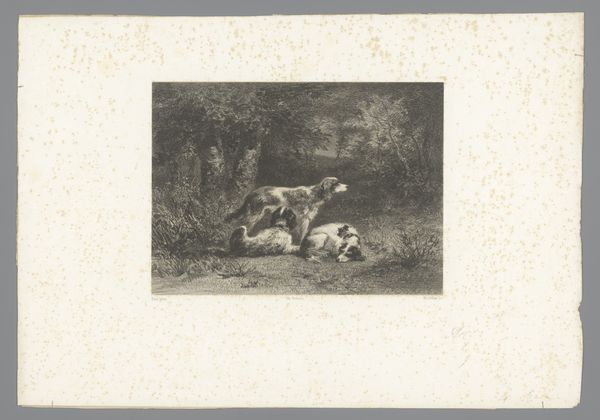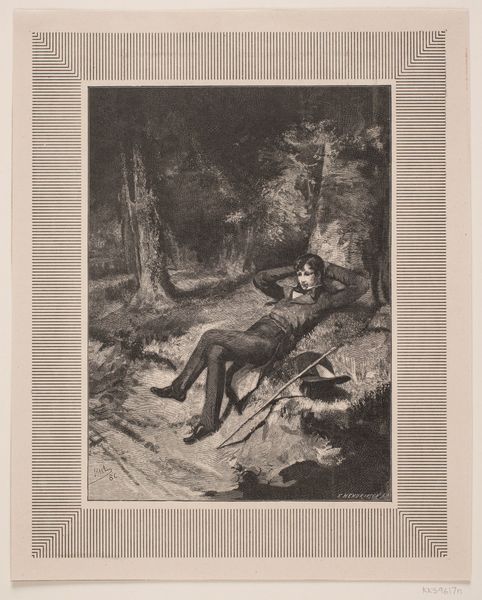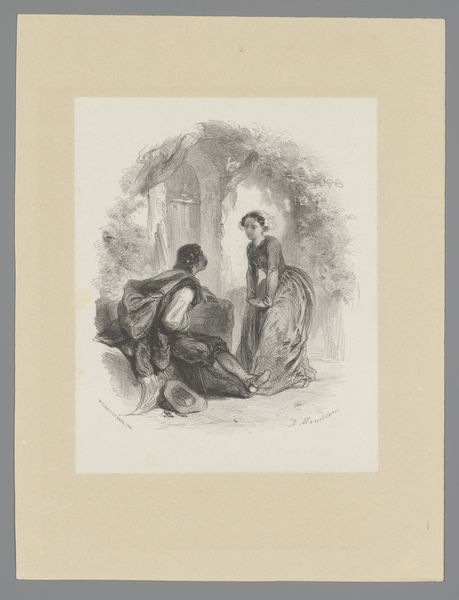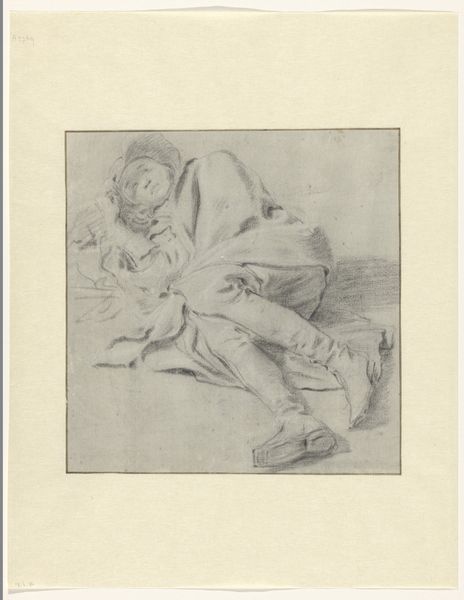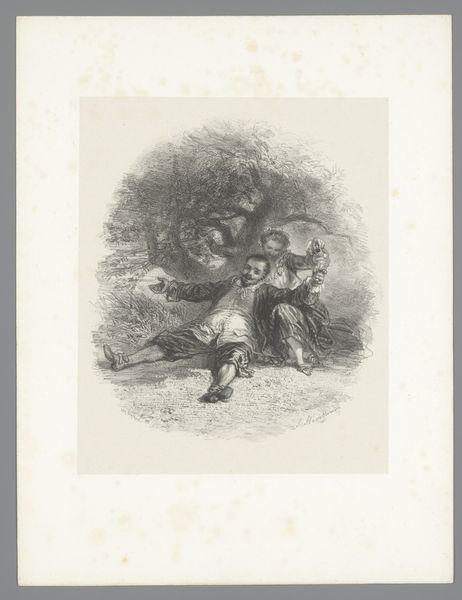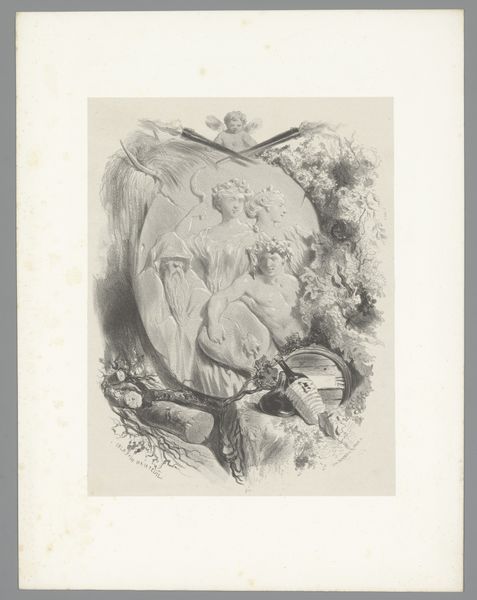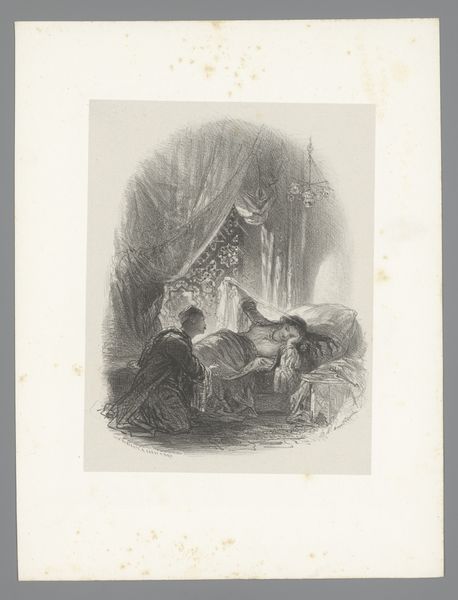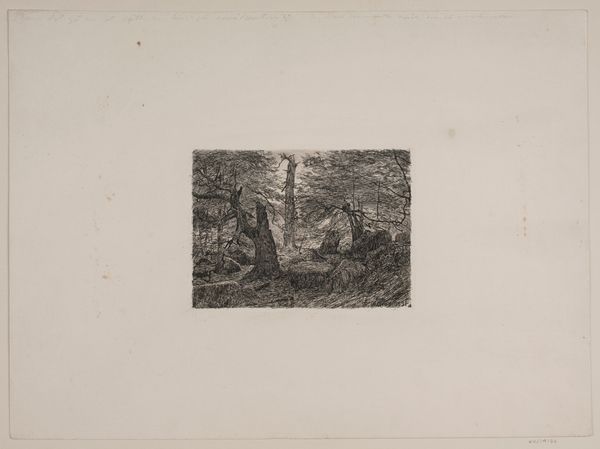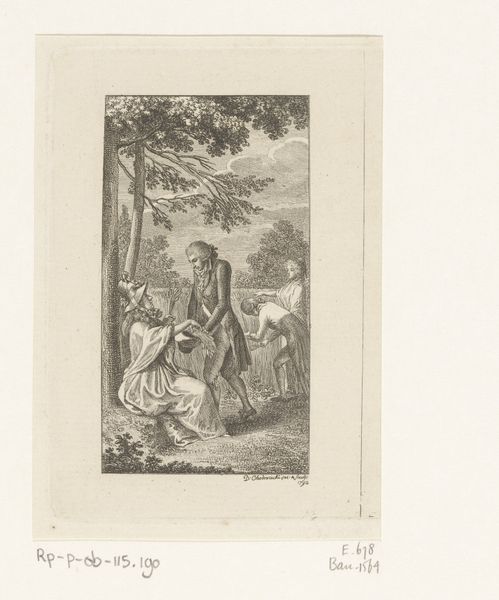
Rouwend persoon aan de voet van een galg met een gehangene 1852 - 1890
0:00
0:00
print, etching
#
narrative-art
# print
#
etching
#
landscape
#
figuration
#
history-painting
#
monochrome
Dimensions: height 95 mm, width 71 mm
Copyright: Rijks Museum: Open Domain
Curator: This etching, titled "Rouwend persoon aan de voet van een galg met een gehangene," translates to "Mourning person at the foot of a gallows with a hanged man," was created by Willem Linnig II between 1852 and 1890 and is held in the Rijksmuseum. Editor: The sheer desolation is striking. A lone figure huddles on the ground, consumed by grief beneath the stark silhouette of a hanged man. The monochrome palette heightens the somber mood, everything rendered in shades of despair. Curator: It’s an intensely political piece, really. Consider the historical context. The period witnessed intense social upheaval. Linnig presents the raw emotional fallout of state violence and its impact on ordinary people, on a mother and perhaps her executed son. Editor: That resonates deeply. Is the prone figure gendered as female to elicit a specific emotional response? And I can’t help but see the historical parallels, echoes of injustice in our own time. There’s an urgency to the work that transcends its historical moment. Curator: I agree. And beyond the immediate sorrow, consider the institutional context. The Rijksmuseum's choice to display this piece—a reflection on justice and punishment—raises important questions about the role of cultural institutions in confronting difficult histories. Editor: How fascinating that such a grim subject finds a home within a museum space dedicated to national history and cultural heritage. Curator: Precisely. It challenges us to think critically about power structures and their consequences. What do these images legitimize, or contest? The landscape becomes a witness to atrocity. Editor: The details really pull you in – you notice the details only after confronting the disturbing scene as a whole. Curator: For me, the true strength of this piece lies in its refusal to shy away from the uncomfortable realities of power. It's a historical artifact that speaks to the ongoing struggle for justice and equity. Editor: Absolutely, seeing it this way, understanding it's social purpose and significance – really opens the conversation about injustice throughout history. Curator: Indeed. Art invites, and in some cases forces, necessary confrontations with uncomfortable truths.
Comments
No comments
Be the first to comment and join the conversation on the ultimate creative platform.
